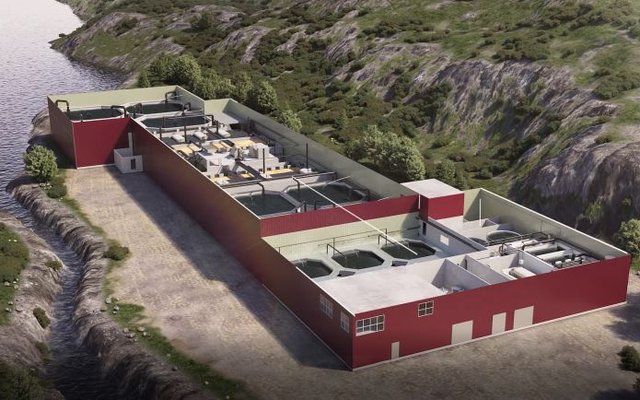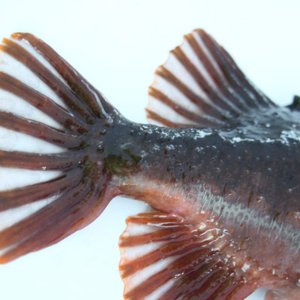AquaOptima and Vikan Settefisk have signed an agreement to build a smolt and post-smolt facility on Frøya. The foundations are nearly complete, and the facility is scheduled for completion in late 2019.
“We can see that post-smolt facilities are going to be a big deal in the industry in the years to come, and we want to be at the forefront of this development. Compact RAS facilities constitute a competitive advantage for fish farmers,” says Børge Søraas, CEO of AquaOptima.
The RAS facility at Tverrvågen on Frøya will be a smolt and post-smolt facility, with a mix of salmon and trout production in seawater, where each species is kept in different sections.
Production tanks at the facility will have a total volume of 7000 m3, and an annual production capacity of 3.2 million post-smolts a year. The RAS facility is constructed in collaboration with building contractor Petter Bakøy AS. Overhalla betongbygg will supply the tanks.
Compact and efficient
The production tanks will serve as both fish tanks and external walls. Because the wall continues where the tank edge ends, the facility will be both area-efficient and economically favourable for the farmer.
“The facility is both compact and efficient; most functions are automated. A high degree of automation means the facility can operate with a minimum of staff. Post-smolt are in high demand in the industry right now. We have considerable expertise in this area, and we want to focus our energy even more in this direction in the time to come,” Søraas explains.
He can see the potential for several synergies from this project, both in terms of RAS technology in Norway and in terms of further growth for AquaOptima.
“For us, this is an important project. It shows we are serious about focusing on developments in Norway. We are very pleased with the process so far, and we look forward to seeing the results from the reference facility that is our biggest to date in Norway.”
Close collaboration
“We are working very closely with AquaOptima. In the initial phase, they will provide us with training, because a lot of this is new to us,” says Frode Reppe, founder of Vikan Settefisk.
They are investing upwards of NOK 140 million in this facility, and Reppe describes it as a necessary upgrade to meet future needs.
“For us, this is a do-or-die situation. If we want to be a contender on the juvenile fish side of the industry, we need bigger volumes and bigger fish. This offers greater flexibility in terms of placing and makes us able to deliver on demand.”
He emphasizes the benefits of working closely with an experienced Norwegian partner.
“Having them close, both geographically and linguistically, is a huge benefit for us. They are RAS experts, and we are excited about taking this to the next level,” Reppe says.
Custom facility
Søraas explains that the collaboration with their client has been very good; they have worked closely on mapping out the criteria for the custom facility.
“The Vikan facility is designed based on the client’s contributions and wishes, and it is a testament to what we can do. This facility is most definitely not off-the-shelf, and we have made good use of our technology, keeping a strong focus on optimal water quality.”
The optimal water quality at Vikan Settefisk’s new RAS facility comes courtesy of the OptiFarm technology, where OptiTrap and OptiFlow solutions play a key role.
“We will continue to work closely with our client, and plan to take part in the implementation and start-up phases to make sure that our competence in terms of how to operate the technology, especially the RAS and the bio filter, is transferred to the client,” Søraas explains.
Reducing H2S risk
The RAS facility also has technology in place to prevent the accumulation of organic material, thus preventing incidents involving H2S.
“The design makes it easy to identify H2S risks, where particles in waste water can sediment and accumulate in pumps or sumps.”
If this sediment is not removed and begins to decompose it could produce H2S, which is extremely toxic to the fish.
“This problem is especially common in salt-water systems, and we have taken steps to reduce the risk of sediment accumulation. Even so, it is important that the operator keeps an eye out for any accumulation,” Søraas explains.
Video of turnkey facility
AquaOptima has made a video about RAS deliveries based on the design of the turnkey Vikan facility.












